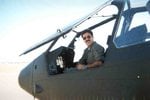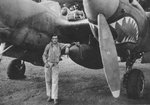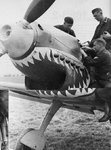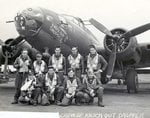Navigation
Install the app
How to install the app on iOS
Follow along with the video below to see how to install our site as a web app on your home screen.
Note: This feature may not be available in some browsers.
More options
You are using an out of date browser. It may not display this or other websites correctly.
You should upgrade or use an alternative browser.
You should upgrade or use an alternative browser.
Sharkmouth.
- Thread starter GT
- Start date
Ad: This forum contains affiliate links to products on Amazon and eBay. More information in Terms and rules
- Status
- Not open for further replies.
More options
Who Replied?cheddar cheese
Major General
Great pics! 8) Guess who has a Helicopter siggy in progress ATM.. 
FLYBOYJ
"THE GREAT GAZOO"
cheddar cheese said:Great pics! 8) Guess who has a Helicopter siggy in progress ATM..
ME?!?
cheddar cheese
Major General
I dont know. Do you? 
FLYBOYJ
"THE GREAT GAZOO"
cheddar cheese
Major General
You guessed WRONG 

Actually Plan_D they use the AH-1W now. They are going to the AH-1Z now though. For the Huey they use the UH-1N and they are switching over to the UH-1Y and UH-1Z.
The rockets are called Hydras still I believe (Not a hundred percent sure though).
The rockets are called Hydras still I believe (Not a hundred percent sure though).
US Army: AH-1G, AH-1Q, AH-1S, AH-1F,
USMC: AH-1J, AH-1T, AH-1W Super Cobra and soon to be AH-1Z
The Army does not actually use the AH-1 Cobra anymore. There are still some reserve units that use it but the Active army has retired them all.
The Army used the AH-1G which were later upgraded to AH-1S and were later redesignated to other standards. The AH-1S was also a production series.
AH-1S
The AH-1J was a Marine version called the SeaCobra.
AH-1J Sea Cobra
AH-1T
AH-1W Super Cobra
In one of the threads here I posted a picture I took of a AH-1W.
USMC: AH-1J, AH-1T, AH-1W Super Cobra and soon to be AH-1Z
The Army does not actually use the AH-1 Cobra anymore. There are still some reserve units that use it but the Active army has retired them all.
The Army used the AH-1G which were later upgraded to AH-1S and were later redesignated to other standards. The AH-1S was also a production series.
AH-1S
The AH-1S was a three-step program to upgrade all AH-1G/AH-1Q/AH-1R Cobras to the advanced Modernized version. All AH-1S Cobras were redesignated by the US Army as AH-1P, AH-1E, or AH-1F Modernized Cobras. All Modernized Cobras, including the AH-1S, AH-1P, and AH-1E used the M73 reflex sight for optical sighting and fire control and the Telescopic Sight Unit (TSU). None of the four armament subsystems used with the four AH-1S variants (Modified, Production, Upgunned, and Modernized) were interchangeable without considerable modification or conversion of the AH-1S aircraft.
The designation "Modified AH-1S" refers to all existing AH-1G/AH-1Q/AH-1R Cobras modified to Production AH-1S standard beginning in 1976. With the addition of the XM65 TOW/Cobra missile subsystem the Cobra's primary mission changed to the anti-tank role, but retained the direct aerial fire support, armed escort, and reconnaissance missions. The new armament subsystem was redesignated M28A2. The Modified AH-1S could be identified by the snub-nosed mounting of the Telescopic Sight Unit (TSU). The AH-1S also had the traditional rounded crew canopy, instead of the new semi-flat canopy that became standard with the new production AH-1S. Some AH-1S Cobras received the C-NITE upgrade, which allowed the gunner to designate and acquire targets during night or adverse operating conditions.
First Production AH-1S (Step 1, 100 aircraft, Mar 77-Sep 78) was the new production Cobra featuring a new Bell-designed seven-plane semiflat crew canopy, an improved T-shapped instrument and control panel layout arranged to enhance nape-of-the-earth (NOE) flight, and new composite rotor blades. The Production AH-1S was equipped to fire the XM65 airborne TOW/Cobra anti-tank missile system using the M128 helmet sight subsystem (HSS). The Production AH-1S was equipped with an upgraded AlliedSignals Engines T53-L-703 1800 shp turbo shaft engine, gearbox, and transmission that was lacking in the AH-1Q. The Production AH-1S mounted the new M28A3 armament subsystem with M134 minigun and M129 grenade launcher and retained the 2.75 inch rocket system. The M28A3 was converted from existing stocks of M28A1 armament subsystems. This new version was first fielded with the 82nd Airborne Division at Fort Bragg, North Carolina in August 1977. The Production AH-1S could be identified by the new flat panel canopy.
Upgunned AH-1S (Step 2, 98 new production aircraft, Sep 78-Oct 79), or Enhanced Cobra Armament System (ECAS) new production Cobra, featured a new 20mm/30mm universal gun turret and retained the M65 TOW/Cobra missile system. The new M97A1 universal turret was fitted with the three-barrel M197 20mm automatic gun with automatic compensation for off-axis gun firing. Since this aircraft lacked the rocket management system (RMS) it could not use the 2.75 inch rocket system that was standard on all other model Cobras. The Upgunned AH-1S could be identified by the tapered tips on the new fiberglass main rotor blades.
AH-1E Enhanced Cobra was identical to the Upgunned AH-1S (ECAS), the M65 TOW/Cobra missile system with the M97A3 armament subsystem. The AH-1E could use the M130 flare and chaff dispenser. The AH-1E could be identified by the tapered tips on the fiberglass main rotor blades.
AH-1S Modernized Cobra (Step 3, 530 aircraft, Nov 79-Jun 81). Of 530 Modernized Cobras, 387 were converted for old AG-1G Cobras and 143 were from new Production aircraft. The Modernized Cobra featured a new fire control system with a pilot's M76 Head-Up Display (HUD), M136 Helmet Sight Subsystem (HSS), laser rangefinder and tracker, and M26 Fire Control Computer (FCC). The modernization program also added an M143 Air Data Subsystem (ADS). The installation of the M147 Rocket Management Subsystem (RMS) permitted use of the standard 2.75 inch rocket system, in addition to the M65 TOW/Cobra missile system, and the M197 20mm gun on the new M97A2 universal turret. The Modernized AH-1S could mount M158 seven-tube, M200 19-tube, M260 seven-tube, or M261 19-tube rocket launchers. The Modernized AH-1S Cobra had an infrared jammer mounted on the top of the engine fairing and a hot metal plus plume infrared suppressor extending from the back of the engine. The Modernized AH-1S could be identified by the air data sensor mounted above the right side of the canopy.
AH-1P Production Cobra was identical to the new Production AH-1S, the M65 TOW/Cobra missile system with the M28A3 armament subsystem. The AH-1P could use the M130 flare and chaff dispenser. The AH-1P could be identified by the flat panel canopy.
http://www.globalsecurity.org/military/systems/aircraft/ah-1s.htm
The AH-1J was a Marine version called the SeaCobra.
AH-1J Sea Cobra
The Marines also operated armed Hueys in Vietnam, and ordered their own version of the Cobra in May 1968. The USMC desired a twin engine AH-1G; thus, the SEA COBRA (AH-1J) was developed. Featuring the Pratt and Whitney Twinpac T400 engine (two 900-hp turboshaft engines coupled together) giving an overall increase in installed power, the AH-1J Sea Cobra included a new nose turret gun, the three barrel XM-197 20mm and other improvements. While development and production of the first 49 ordered were under way, the Marines obtained 38 AH-1Gs from the Army.
The Marines depend on attack helicopters to provide close-in fire support coordination in serial and ground escort operations. Such support is required during amphibious ship-to-shore movements and subsequent shore operations within the objective area. AH-1 is designed for the following tasks:
Armed escort for helicopters carrying personnel and cargo
Landing zone fire suppression support
Visual armed reconnaissance
Target marking and direction for high-performance attack aircraft
Convoy escort and fire suppression for ground units
Operations from air capable ships
Point target attack of threatening armor
Self-defense and protection of helicopters carrying personnel and cargo from threatening air-to-air weapon-equipped helicopters
After initial training of Marines by the Army, Marine Huey Cobras first became operational in April 1969 with VMO-2 in Vietnam. In December 1969, the AH-1Gs were transferred to HML-367. After flight tests beginning that same month and subsequent BIS trials, the first AH-1Js joined them in February 1971, entering combat the following month. AH-1Js, including those of HMA-369, participated in Southeast Asia operations until final withdrawal and continued as the Marine's attack helicopter afterwards, a total of 67 being delivered. The Marine AH-1Gs became the reserve helicopter attack squadron's aircraft.
http://www.globalsecurity.org/military/systems/aircraft/ah-1j.htm
AH-1T
With increasing demands for higher performance, particularly greater load-carrying capability in high temperature conditions, Bell developed improved dynamic components for the Huey series. Application of these components, which included a larger diameter rotor, led to the 309 attack helo in the early Seventies. This allowed an increased payload, providing more combat capability. The subsequent Marine-ordered version of the King Cobra was designated the AH-1T.
The United States Marine Corps (USMC) had identified a need for more armaments; thus, the AH-1T upgrade was initiated. This aircraft had an extended tailboom and fuselage and an upgraded transmission and engines. In addition to the modifications for improved combat effectiveness, major efforts were made to incorporate the lessons of the Cobra experience in achieving greater reliability and maintainability. With the TOW missile system added to its weapons, the AH-1T gave Marines a ground attack capability far beyond that first envisioned by their predecessors who took the first Marine Huey Cobras into combat in the late 1960s.
The AH-1T is fully capable of performing its attack mission in all weather conditions. Additional missions include direct air support, antitank, armed escort, and air to air combat. The TOW missile targeting system uses a telescopic sight unit (traverse 110º, elevation 60º/+30º), a laser augmented tracking capability, thermal sights and a FLIR to allow for acquisition, launch, and tracking of all types of TOW missiles in all weather conditions. The Cobra also uses a digital ballistic computer, a HUD, Doppler nav, and a low speed air data sensor on the starboard side for firing, and has in-flight boresighting. External stores are mounted on underwing external stores points. Each wing has two hardpoints for a total of four stations. A representative mix when targeting armor formations would be eight TOW missiles, two 2.75-in rocket pods, and 750x 20-mm rounds. The gun must be centered before firing underwing stores. Armored cockpit can withstand small arms fire, and composite blades and tailboom are able withstand damage from 23-mm cannon hits.small arms fire, and composite blades and tailboom able to withstand damage from 23-mm cannon hits.
http://www.globalsecurity.org/military/systems/aircraft/ah-1t.htm
AH-1W Super Cobra
The AH-1W Super Cobra is a day/night marginal weather Marine Corps attack helicopter that provides enroute escort for assault helicopters and their embarked forces. It is the only western attack helicopter with a proven air-to-air and anti-radar missile capability. The primary mission of the AH-1W aircraft is as an armed tactical helicopter capable of helo close air support, low altitude and high speed flight, target search and acquisition, reconnaissance by fire, multiple weapons fire support, troop helicopter support, and point target attack of threatening armor. The AH-1W provides fire support and fire support coordination to the landing force during amphibious assaults and subsequent operations ashore.
The AH-1W is a two-place, tandem-seat, twin-engine helicopter capable of land- or sea-based operations. The rear seat pilot is primarily responsible for maneuvering the aircraft. The front pilot controls the aircraft's weapons systems, but he also has a full set aircraft controls. The AH-1W distinguished itself with its more powerful T700-GE-401 fully marinized engines and advanced electronic weapons capability. The AH-1W has significantly improved power available in high altitude, hot environment, and single engine performance. The Super Cobra is armed with a 20mm turret gun, TOW, Hellfire, Sidewinder, Sidearm missiles, and 5 inch or 2.75 inch rockets. The HELLFIRE Missile System increased ordnance delivery and firepower capabilities. The AH-1W Super Cobra provides full night-fighting capability with the Night Targeting System (NTS). The Night Targeting System (NTS) further enhanced the AH-1W's warfighting capability by adding FLIR sensor, CCD TV sensor, Laser Designator/Rangefinder, Automatic Target Tracking and FLIR, and CCD TV video recording.
Current AH-1W assets are comprised of a mixture of new production AH-1Ws and aircraft block upgrade AH-1Ts remanufactured into the AH-1W aircraft. By the early 1980s, USMC aircraft inventory was declining due to attrition; a fully navalized helicopter was sought. In 1983, the USMC contracted with BHI for 44 AH-1Ws. An upgrade to the AT-1T, the AH-1W was received in 1986. The Tactical Navigation System (TNS) was placed in all production and block upgrade AH-1W aircraft delivered since February 1991. Previously delivered AH-1Ws are retrofit with TNS prior to CCM/NTS induction. The NTS/Canopy/Cockpit Modification (CCM) replaces the existing canopy, nose faring, and copilot/gunner instrument panel to make provisions for the NTS and adds the TNS, CDU-800, to the front cockpit. Additionally, a communication/ navigation upgrade, ECP 1686, incorporated an ARC-210(V)Electronic Protection (EP) Radio, an ARN-153 V-4 TACAN, and an AN/ASN-163 Global Positioning System/Inertial Navigation System (EGI) commencing in 1996.
Night Targeting System (NTS) TECHEVAL was conducted from May through Septempber 1993 by VX-5 at Naval Air Warfare Center, Weapons Division (NAWC-WD), China Lake; Yuma Proving Ground, Arizona; White Sands Missile Range, New Mexico; Bridgeport, California; and on amphibious ships at sea. Follow-on Operational Test and Evaluation (FOT&E) (OT-IIIA) commenced in February 1994 and concluded in May 1994. NTS OPEVAL was conducted from May through September 1993 by VX-5 at Naval Air Warfare Center, Weapons Division (NAWC-WD), China Lake; Yuma Proving Grounds, Arizona; White Sands Missile Range, New Mexico; Cold Lake, Canada; and on amphibious ships at sea. Follow-on Operational Test and Evaluation (FOT&E) commenced during July 1994 and ended in April 1995.
The NTS upgrade provides increased mission, safety and performance characteristics and incorporates a Canopy/ Cockpit Modification to the front cockpit. The approved OSIPs which include the ARC-210 (v) EP Radio, the ARN-153V(4)TACAN and the Global Positioning System/Embedded Inertial Navigation System (EGI) AN/ASN-163 (V) will also enhance the AH-1W Weapon Systems upon their incorporation.
The NTS is a modification of the existing M-65 TOW Missile System that offers a fire control system providing the flight crew with the ability to detect, acquire, track, lock-on, range, and designate targets under day, night, and adverse weather conditions. ECP 1648R4, Canopy/Cockpit Modification is the ECP that modifies the aircraft to accommodate the NTS. The front cockpit of the AH-1W has been modified to facilitate the addition of the NTS. This modification has also resulted in increased efficiency in the front cockpit and helps divide cockpit workload between the front and rear cockpits. Specifically, the additions and deletions are: Expansion of the ASQ-205 Cockpit Control System (CCS) to include the front cockpit; re-design of the instrument panel to include a more IFR compatible flight instrument cluster; addition of a 5" x 5" Multi-Function Display (MFD) in the front cockpit; and addition of the ANVIS HUD system with control heads in both cockpits. The Night Targeting System (NTS) includes the following hardware changes to the AH-1W: modification of the M-65 telescopic sighting unit (TSU) to accomodate the FLIR; an extended Optical Relay Tube (ORT) to accommodate a CCD TV camera; and a ddition of a Laser Designator/Rangefinding System (LDRS).
ECP-1674 Electronic Warfare (EW) Suite reduces aircraft vulnerability with electronic countermeasures. The suite is designed to alert and protect the aircraft from surface-to-air and air-to-air missiles. The AN/AAR-47 Missile Warning System (MWS) provides a visual and aural warning to flight crews of missile detection, while at the same time the MWS will initiate countermeasures by sending an eject signal to the AN/ALE-39 Countermeasures Dispenser Set (CDS). The AN/AVR-2 Laser Warning Receiver detects pulsed laser light (such as a rangefinder) directed at the helicopter and warns the crew of this activity. It provides an audio alert and identifies the threat by its type and location relative to the helicopter. The AN/APR-39A(V)2 Radar Detection System is a passive omni-directional detection system which receives and displays information to the pilot concerning the radar environment surrounding the helicopter.
The AH-1W is operated in eight composite HMLA squadrons composed of 18 AH-1 and 9 UH-1 aircraft. The AH-1W is currently being outfitted with a Night Targeting System/Forward Looking Infrared Radar that provides laser rangefinding/designating and camera capabilities.
The Marine Corps deployed 4 of 6 active force squadrons (48 AH-1Ws) to Southwest Asia during Operation Desert Shield/Desert Storm. The deployment required no additional augmentation to squadron support personnel and only one Bell Helicopter technical representative. During Operation Desert Storm, the AH-1W comprised less than 20% of the attack helicopter force deployed, yet flew more than 50% of the total attack force flight-hours. In the entire Desert Shield/ Desert Storm campaign, SuperCobras flew more than three times the number of hours per aircraft per month than any other attack helicopter. And during the "100 Hour War," its reliability and 92% mission readiness rate were superior to all other attack helicopters by as much as 24%... without any factory-supported maintenance augmentation. Perhaps most impressive, this record was amassed under some of the most adverse environmental conditions ever endured in modern warfare. Temperatures consistently reached the 57-63°C (135-145°F) range. A mix of fine granite/limestone sand dust the consistency of talcum powder, was a constant threat to man and machine. And the air was often filled with a black concoction of burning oil and blowing sand The final result? Marine Corps crews and their AH-lWs destroyed 97 tanks, 104 armored personnel carriers and vehicles, 16 bunkers and two antiaircraft artillery sites.
Future Upgrades include provisions for an Inflatable Body And Head Restraint System (IBAHRS). The IBAHRS itself will be incorporated upon receipt of the system. An operational requirement has been identified for a Wing Tip Armament Station modification and retrofit. Upon approval, this upgrade will be incorporated into the AH-1W airframe and will include as a minimum provisions for integration of up to six (6) universal weapons stations. The Cockpit Integration Requirement identified in the Operational Requirements Document for the AH-1W Mid Life Upgrade will be targeted by the 4 Bladed program which is being studied as another future AH-1W weapon system enhancement.
http://www.globalsecurity.org/military/systems/aircraft/ah-1w.htm
In one of the threads here I posted a picture I took of a AH-1W.
- Thread starter
- #350
cheddar cheese
Major General
Nic! I like the P-38 one. Well I would wouldnt I 
evangilder
"Shooter"
cheddar cheese
Major General
Haha  If that doesnt stike fear in to the enemy I dont know what will
If that doesnt stike fear in to the enemy I dont know what will 
Ah I like the one of the Bf-109 up there. I think that was the only known 109 to sport the shark mouth.
the lancaster kicks ass
Major General
- 19,931
- Dec 20, 2003
i love that one on the B-17........
I would call that one cute!
the lancaster kicks ass
Major General
- 19,931
- Dec 20, 2003
well no it doesn't exactly fill you with fear, that's more your 3ft pet shark kind of shark........
evangilder
"Shooter"
I saw that and thought of the killer rabbit in Search for the Holy Grail! The ADF antenna nose art is a novel concept though!
cheddar cheese
Major General
That killer rabbit is lethal...DO NOT approach 
Nonskimmer
Captain
Some ground crew guy's idea of a joke probably, eh? Funny! 
- Status
- Not open for further replies.
Users who are viewing this thread
Total: 1 (members: 0, guests: 1)





